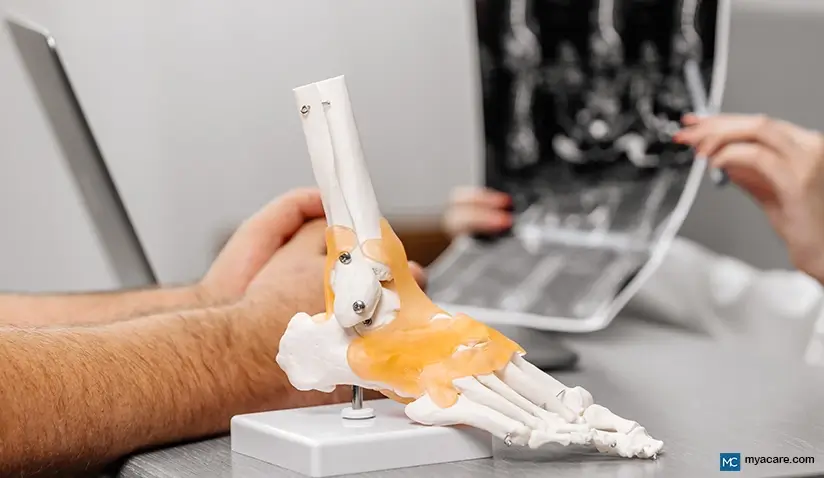Why Is Ankle Mobility Important?

Ankle mobility is a term usually seen within the context of sports, mainly because 30% of all sports-related injuries involve the ankles and these cases are usually underreported, not properly treated by professionals, and very likely (up to 75% of cases) to recur, which can have a real effect over an athlete’s performance[1,2].
When people think about taking better care of their bodies, the ankles and their mobility tend to be overlooked. The ankles are more important than many people think, they are part of a complex system that almost constantly keep us balanced while standing up. If they don’t function properly our lower extremities are not able to perform correctly, leading to several complications [3].
Ankle mobility, in short, refers to how flexible the ankle is [4]. A very flexible ankle should be able to allow 65-75 degrees of movement along a sagittal axis (up and down) [5]. There are many different methods to determine if an individual has experienced loss of mobility/range of motion, however, we’ll focus more on the actual phenomenon rather than the ways to study it.
Why is Ankle Mobility Important For Me?
For athletes, the loss of mobility will have a negative effect over performance. If the complex of joints in the ankle becomes more rigid, then it will be more difficult and uncomfortable to move the foot along its axis [6].
For non-athletes, the problems come much later in life. Over time, ankle mobility naturally decays and in cases where previous history promoted very rigid joints, the risk of experiencing falls or other similar accidents increases considerably, the elderly (≥65 years) being the most vulnerable population [7].
There are several other consequences related to low ankle mobility, like an increased risk of developing plantar ulcers in diabetic individuals, however, poor performance of the lower extremities is by far the most common example [9].
How Do I Lose Ankle Mobility?
The following are some recognized risk factors that will promote loss of ankle mobility over time [3, 8]:
- The aging process
- Strokes
- Parkinson’s disease
- Poorly fitted footwear
- Incorrect exercise technique
- Poor anatomical alignment
- Poor muscle conditioning
- Neuromuscular problems
- Injuries
Any of these factors can contribute to make joints stiffer, which promotes a series of small anatomical alterations to muscle architecture, loss of strength and further loss of mobility [3].
How to Improve Ankle Mobility?
Exercise is the recommended treatment to improve ankle mobility. Strength training has been recommended in the past because of its beneficial effects, especially for the elderly. However, other activities like 30 min sessions of Pilates, dancing or soccer can also have positive effects [10, 11, 12].
Some people consider that spending more time standing up is helpful against loss of mobility, however, evidence suggest that although not entirely useless, the benefits are simply too small. Exercises involving some form of resistance are much more effective [13].
A physiotherapist can also provide some basic ankle exercises that you can do at home.
Conclusion
Your ankles are just as vulnerable to decay as the rest of your body and if they are to be kept in good condition, then they’ll need more attention and maintenance.
Ankle injuries are extremely common, and many people don’t report them, this leads to a great number of recurrent damage that could have been prevented with simple exercises or by being treated by a professional instead of leaving your ankles to heal by themselves.
To search for the best Orthopedics Healthcare Providers in Croatia, Germany, India, Malaysia, Singapore, Spain, Thailand, Turkey, Ukraine, the UAE, UK and the USA, please use the Mya Care search engine.
To search for the best healthcare providers worldwide, please use the Mya Care search engine.
References
Featured Blogs



